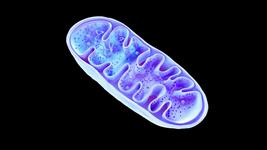CMN Weekly (15 November 2024) - Your Weekly CRISPR Medicine News
By: Gorm Palmgren - Nov. 15, 2024
Top picks
- Researchers in Switzerland have used a combination of CRISPR-Cas base editors and prime editors to map cancer mutations in the epithelial growth factor receptor (EGFR) gene. The team created a high-throughput mutational scanning platform, enabling precise editing of the EGFR gene across its coding sequence in multiple cell lines. This approach assessed variant pathogenicity, identifying key mutations linked to tumour progression and drug resistance.
- BEAM-301, an adenine base editor delivered in lipid nanoparticles and developed by Beam Therapeutics, is shown to correct ~60% of the G6PC1-R83C mutation in a humanised mouse model of glycogen storage disease type Ia. Correction restored glucose control, corrected metabolic abnormalities, and improved survival. Remarkably, ~10% correction was sufficient for therapeutic benefit, highlighting BEAM-301's potential as a durable treatment for patients with this genetic disorder.
Research
- A new study shows that both CRISPR-Cas9 and adenine base editors (ABE) induce off-target structural variations (SVs) in mouse embryos and human T cells, with ABE causing fewer SVs than Cas9. Cas9 also triggers p53 activation and apoptosis, while ABE arrests cells in G0. High-fidelity ABE (ABE-V106W) significantly reduces SVs, highlighting the need for improved editing precision in clinical applications.
- Peptide-based nanoparticles (ADGN) have been engineered for efficient CRISPR-Cas9 RNA delivery, overcoming challenges in gene editing. ADGN self-assembles with RNA, targets cancer cells via laminin receptors, and protects RNA during delivery. In vitro, ADGN achieved 60% luciferase knockout efficiency. In vivo, systemic ADGN delivery successfully targeted lung tumour cells in mice, enabling precise gene editing.
- CRISPRoffT is a new comprehensive database for off-target effects that integrates data from 74 studies covering 368 guide RNAs, 85 Cas/guide combinations, and diverse CRISPR systems. It offers validated and predicted off-target insights across multiple cell lines, enhancing the safety and precision of CRISPR therapeutics. This resource aims to optimise guide RNA design, refine prediction algorithms, and advance safe clinical gene-editing applications.
- Researchers at Columbia University have developed CRISPRmap, a multimodal optical pooled CRISPR screening method that integrates in situ barcode readout with multiplexed immunofluorescence and RNA detection, enabling spatial phenotyping in diverse cell types and tissues. Applied to breast cancer, it identified pathogenic mutations in DNA damage repair genes affecting therapy response, refining variant classification.
- Evo is a new 7-billion-parameter genomic foundation model that predicts and generates functional DNA, RNA, and protein sequences at single-nucleotide resolution across genome scales. By integrating multimodal and multiscale biological insights, Evo excels in validating tasks like synthetic CRISPR-Cas designs.
- Chinese researchers have shown that recombinant oncolytic HSV-1 virus SONC103, equipped with CRISPR-Cas9, can disrupt HPV16 oncogenes in cervical cancer cells, reducing proliferation and promoting apoptosis. SONC103 downregulates E6/E7 oncoproteins, restores p53/pRB function, and eradicates HPV16 DNA. In murine models, it significantly inhibits tumour growth, highlighting its potential as a targeted therapy for HPV16-positive cervical cancer.
- American researchers have used transcriptome-wide CRISPR-Cas13 screens in multiple human cell lines to identify 46 universally essential and more than 700 lncRNAs necessary in specific contexts. The researchers at New York University explored how the loss of over 6,000 human lncRNAs impacted cellular fitness in HEK293FT and four cancer cell lines.
- CRISPRepi is a new comprehensive platform consolidating multi-omic data from 74 CRISPR-based epigenome editing systems across 87 cell types and six species. It curates 5962 sgRNAs linked to 283 genes, enabling researchers to assess editing efficiency, off-target effects, and cell-specific outcomes. With tools for sgRNA design and outcome analysis, CRISPRepi streamlines epigenome editing research and system optimisation.
- Researchers used CRISPR-Cas9 to target antibiotic-resistance genes in methicillin-resistant Staphylococcus aureus (MRSA). They found that CRISPR-Cas9 successfully reduced antibiotic resistance gene expression, restored sensitivity to multiple drug classes, and introduced beneficial mutations, showcasing its potential as a therapeutic tool against multidrug-resistant bacteria.
- PAMPHLET is a novel bioinformatics pipeline that boosts CRISPR-Cas spacer identification up to 18-fold using homology searches, overcoming limitations in PAM sequence prediction. Validated on 20 systems, it predicted PAMs for 18 protospacers, aligning with experimental DocMF results.
Industry
- Tune Therapeutics received approval to initiate a Phase 1b trial for TUNE-401, the first epigenetic silencing therapy targeting chronic hepatitis B. Delivered via lipid nanoparticles, TUNE-401 silences both integrated HBV DNA and cccDNA without cutting DNA, repressing viral genes through methylation. Earlier this year, CMN interviewed Brian Cosgrove, a principal scientist at Tune Therapeutics, about TUNE-401.
- Fate Therapeutics has presented promising early clinical and preclinical data for FT825/ONO-8250, an iPSC-derived CAR T-cell targeting HER2. Initial Phase 1 results in heavily pre-treated cancer patients showed strong safety, CAR T-cell expansion, and activation without exhaustion or toxicities.
- MaxCyte marked its 25 years of innovation in advancing cell engineering this week. Collaborating with CRISPR Therapeutics and Vertex Pharmaceuticals, MaxCyte enabled CASGEVY, the first FDA-approved CRISPR-Cas9-based non-viral cell therapy. With 29 strategic licences, the company continues to drive next-generation therapeutic development, leveraging expanded facilities and expertise to support cell and gene therapy breakthroughs.
- Vor Bio has presented its third quarter 2024 financial results with a net loss of $28 million and $63 million in cash.
- Sangamo Therapeutics has presented its third quarter 2024 financial results with a net profit of $11 million and $39 million in cash.
- Prime Medicine has presented its third quarter 2024 financial results with a net loss of $53 million and $245 million in cash.
- Fate Therapeutics has presented its third quarter 2024 financial results with a net loss of $48 million and $331 million in cash.
- 2seventy bio has presented its third quarter 2024 financial results with a net loss of $10 million and $192 million in cash.
Detection
- A new CRISPR-Cas14-based one-pot detection platform, Cas14VIDet, identifies H. pylori resistance genes with 100% accuracy in 10 minutes, using ultra-fast PCR. Validated against 50 clinical samples, it matches Sanger sequencing in sensitivity and specificity.
- Researchers in India have developed a one-pot RT-RPA-CRISPR-Cas12a assay enabling ultrasensitive, rapid detection of chikungunya virus. Within 35 minutes, the method achieves 100% clinical sensitivity and specificity with dual fluorescence and lateral flow readouts, offering a robust diagnostic tool for resource-limited settings.
Reviews
- Developing pioneering pharmacological strategies with CRISPR/Cas9 library screening to overcome cancer drug resistance. This review provides an overview of the development, methodologies, and applications of CRISPR/Cas9 library screening in the study of cancer drug resistance.
- Genetic engineering and the eye. This review discusses recent advances in ocular genetic engineering, examines their current therapeutic roles, and explores their potential use in future strategies to reduce the growing burden of vision loss and blindness.
- Crispr-based gene therapy for the induction of fetal hemoglobin in sickle cell disease. This review examines the use of CRISPR-Cas9 gene editing to modulate fetal haemoglobin expression as a curative approach for severe sickle cell disease, highlighting current methods, clinical outcomes, and future challenges in accessibility and cost reduction.
- Emerging gene-editing nano-therapeutics for cancer. This review discusses new developments in novel gene editing techniques and recent progress in nanoparticle-based CRISPR-Cas9 delivery specific to cancer applications.
- Prime editing: A gene precision editing tool from inception to present. This review discusses the principles, development, and applications of PE gene editing technology in various genetic mutation-induced diseases.
News from CRISPR Medicine News
- Today, Friday, November 15th, at 3 PM CET, CRISPR Medicine News is hosting a live interview with special guest Dr. Cecilia Jimenez-Mallebrera about collagen VI-related muscular dystrophies. She will chat with CMN Editor-in-chief Karen O'Hanlon Cohrt about current treatment options and prognosis and how gene-editing technologies are being used to develop novel treatments. If you missed the live event, you can always watch past interviews and webinars on our website.
To get more CRISPR Medicine News delivered to your inbox, sign up to the free weekly CMN Newsletter here.
Tags
ArticleMissing linksNewsCMN WeeklyAllogene Therapeutics, Inc.Precision BioSciences, Inc.
CLINICAL TRIALS
IND Enabling
Phase I
Phase II
Phase III
Recurrent or Progressive High-grade Glioma, (NCT06737146)
Sponsors:
Suzhou Maximum Bio-tech Co., Ltd.
Sponsors:
Suzhou Maximum Bio-tech Co., Ltd.
IND Enabling
Phase I
Phase II
Phase III
Advanced Peritoneal Malignancies or Abdominal Metastatic Solid Tumors, (NCT06912152)
Sponsors:
Zhejiang University
Sponsors:
Zhejiang University
IND Enabling
Phase I
Phase II
Phase III







